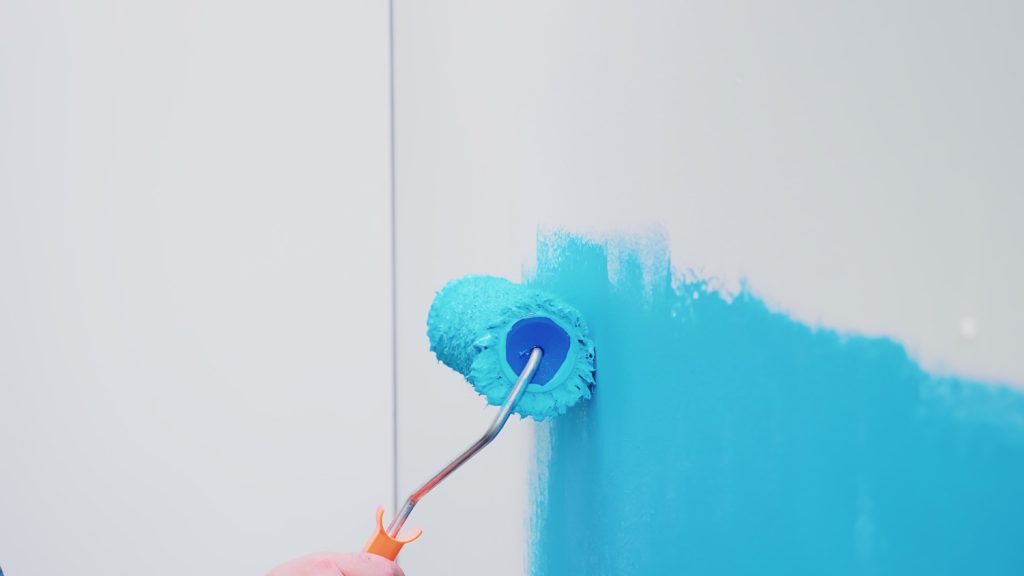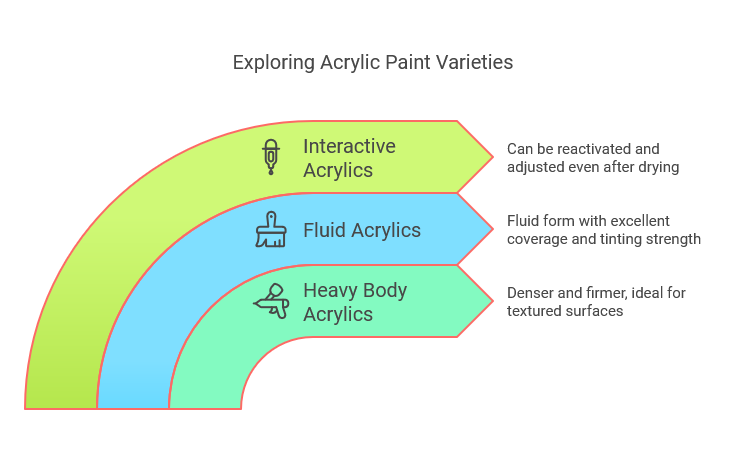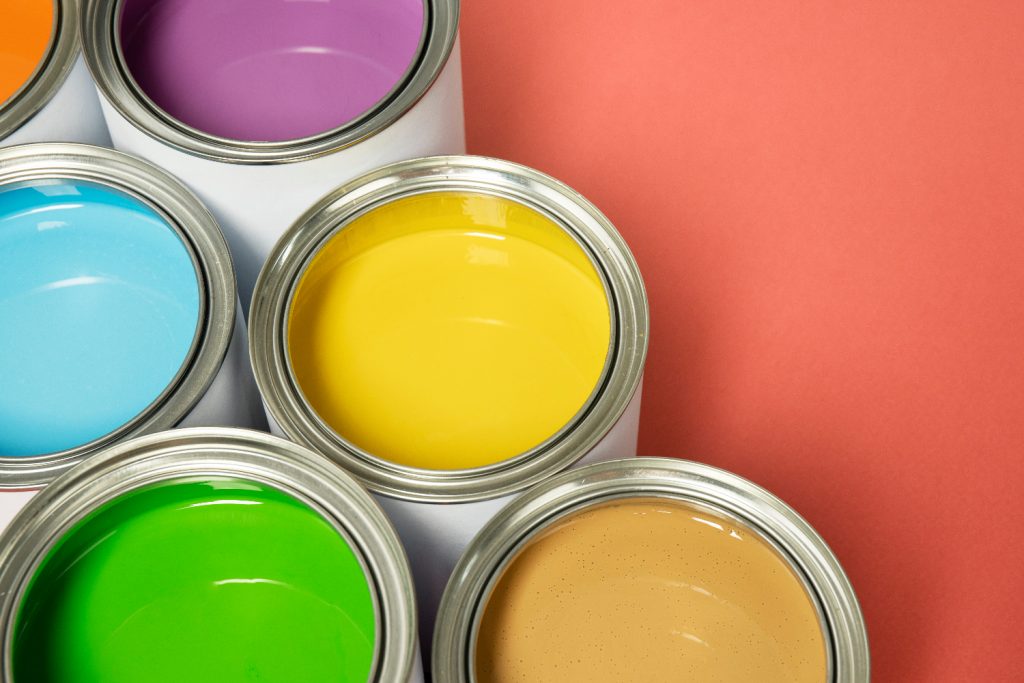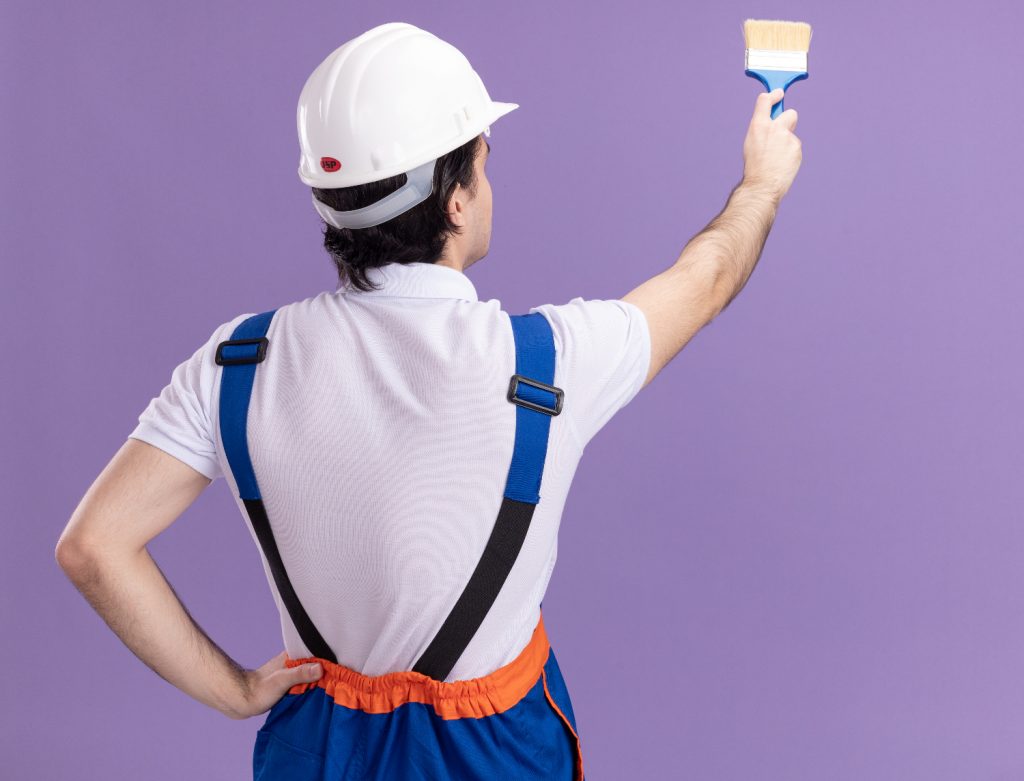
You really haven’t given acrylic for wall paintings a thought, correct? Well, acrylic paint for interior and exterior walls is making a huge wave in home decor. It’s a popular alternative that many homeowners use to enhance their space.
Painting has always been a creative venture, and acrylic paint is a way of showing off a plethora of effects, breathing new life into your otherwise dull corners.
Whatever space you want to fill with colours, these paints are durable, dries in no time and have enormous versatility.
Getting curious? Well, read on.
Understanding Acrylic Paint for Walls
Acrylic paint is a type of paint that is very quick to dry. It’s composed of water-based nature, pigments and acrylic polymer emulsion.
The main purpose of acrylic paint is to create effects and visual contrasts in your paint.
Composition of Acrylic Paint
Water-Based Nature
Acrylic paint uses water as the main solvent, which allows for a quick and easy cleanup using water. But once it dries, this paint becomes water-proof, providing strong and reliable protection.
Pigments
The pigments are primarily responsible for the vivid colours of the acrylic paint. These finely ground colourants can be derived from organic or synthetic materials.
The type of pigment of your acrylic paint will impact its level of transparency and vibrancy.
Acrylic Polymer Emulsion
Acrylic polymer emulsion is a water-based acrylic resin—acrylic resin being a primary ingredient of latex paint gives acrylic paint versatility and sturdy grip to various surfaces that can last for decades.
Types of Acrylic Paint

Acrylic paint has distinctive types, all of which by the way, have unique art plays.
Heavy Body Acrylics
This type of acrylic paint is denser and firmer, making it a perfect choice for surfaces that are not smooth and have a particular texture.
It’s also capable of building bold layers of paint that have depth and volume.
Fluid Acrylics
Fluid acrylics have a fluid form and watery texture. It’s the type often used for creative purposes because it has tinting strength and excellent coverage.
Interactive Acrylics
Interactive acrylics are paints that are mobile and can be reactivated. This means that unlike other acrylic paints, it can be controlled and adjusted, even when it dries.
Advantages of Using Acrylic Paint on Walls
So, what do you ought to gain by working with acrylic paint?
Durability and Flexibility
When acrylic paint becomes stale, it still keeps its limberness and won’t brittle, break or fade in the long run.
Ease of Application
This paint has a speedy drying duration, allowing shorter queue time for the next coat of paint.
With fast layering, you can make the painting process fast and straightforward and realise your expected results without wasting time.
Versatile Surface Adherence
Acrylic paints can thrive in various environments and surfaces like your drywall or concrete, making it workable for any wall decour projects.
Preparing Your Walls for Acrylic Painting
If you don’t know where to start with your acrylic painting application, you can kickstart that process with…
Surface Preparation
Regardless of the type of surface you’re working on, you should never skip cleaning the surface.
Dust off any dirt or grease, before coating your walls to secure good adhesion. And if you see any holes or cracks, fix them and don’t forget to use appropriate fillers.
Priming the Surface
The primer works wonders in keeping the acrylic paint solidly attached to the surface and doesn’t chip off over time.
Moreover, priming provides a uniform foundation, sealing gaps and spots and ensuring smooth coverage of the paint.
Choosing the Right Acrylic Paint

Hold up! Before you commit to a specific acrylic paint, it’s important to be guided in how to make the right choice on type, quality and colour.
Selecting Quality Paint
The quality of acrylic paint that you pick out greatly affects the outcome of your project. Typically, you have two main grades of acrylic paint—artist grade and student grade.
So, how do they differ?
Artist-Grade Acrylics
As the name suggests, artist-grade acrylics are fitting for professional artists—and just about anyone looking for a vibrant finish.
This acrylic paint is the superior type, containing higher concentrations and paint elements that produce better hue intensity and durability. It also provides more precise texture control and layering because of its fuller texture.
Student-Grade Acrylics
Compared to the artist grade acrylics, this one is more economical and created for beginners still learning to craft. These paints have lower pigments but have high concentrations of fillers, leading to their poor colour vibrancy and overall inferior quality.
Anyhow, student-grade acrylics are an excellent choice for practise and bigger projects. Despite not having the same depth, it’s still budget-friendly, providing better coverage.
Colour Selection
You can start with bright hues like yellow or red. These primary tints have different variations that can create nuances. Also, it allows you to mix a vast selection of colours.
Or you can go with the monochrome shades like black and white. These timeless base colours offer you the freedom to try out different textures.
Application Techniques
Are you ready to start with your acrylic painting? If you are, then be ready to get the tools out.
• Brushes
• Rollers
• Paint trays
• Drop cloths
• Water holder
• Painter’s tape
• Paint Edger
Step-by-Step Application Process
Base Coat Application
For even coverage, always make sure the surface is polished and dry. Smooth out imperfections, and if necessary, use a primer to close holes or cracks to facilitate better bonding between the paint and the wall.
Mix the paint and stir it, and add water to achieve the consistency you desire. Then use a roller to cover large spaces more quickly and evenly.
And as you apply, start in the middle and roll outwards. To cut in the tight spaces of the wall, use a brush and merge the paint smoothly with the edges.
Layering Techniques
Don’t ever rush your painting process. The paint must dry completely in each layer to prevent smearing. Acrylic paint dries super-fast anyway, so this shouldn’t be a problem.
The first layer should be applied thinly to not affect the finished texture. Once the first layer of coat sets, apply the second paint in a slightly substantial amount using the same technique.
Continue layering, each layer of paint will make the shade and texture more robust.
When the layers are complete, blend and smooth out the paint with a brush or sponge.
To add your own creative input, you can incorporate other painting techniques, such as dry brushing, to create unique effects.
Tips for Achieving a Flawless Finish
Learn from other people’s acrylic paint for wall mistakes and avoid these painting oversights.
Avoiding Common Mistakes
One of the most common mistakes everyone seems to be guilty of is impatience. Sure, acrylic paint dries swiftly, but it’s so important that it’s totally dried out before applying the next coat.
If you rush, your paint may smudge and not bond properly, thus resulting in a lackluster finish.
Finishing Touches
Only when your acrylic paint has dried completely can you apply a sealant or topcoat for extra protection. This is critical, especially when working on surfaces heavily exposed to moisture and traffic.
Additionally, never overwork your paint. Once applied, don’t roll back your paint on areas repeatedly. This can create streaks and unevenness. If you need to touch up, wait until the paint dries.
Maintenance and Care
With regular upkeep, you can avoid any costly repairs and keep your paint job looking fresh.
Cleaning Painted Walls
Don’t use abrasive materials or harsh chemicals when cleaning acrylic-painted surfaces. Always go for a light cleaning, using a soft, microfiber cloth with soapy water to remove dirt.
Once it dries, wipe it with a dry cloth to not leave stripes or marks.
However, if you’re dealing with tougher stains, we recommend using a water and vinegar solution. Try it first on small spots to ensure it won’t cause damage to the paint before spreading it carefully on the affected area.
Touch-Up Tips
When handling minor repairs, apply touch-ups using a fine brush in small amounts and blend them with the surrounding area.
If you’re dealing with an extensive repair, you might need to repaint the whole wall.
Conclusion

Acrylic paints are versatile, allowing you the creative freedom to bring your visions to life. It has the flexibility to work with various environments and handle intricate designs. Plus, it’s affordable, pulling in more value to your investment.
And because acrylic paint for walls can take on any colours in your room, you can achieve a stylish effect while staying true to your own style.
So, don’t hesitate to explore the endless creative possibilities with acrylic paints—play it with contrast but mind the flow.
If you need professionals to guide you in your acrylic painting venture, A One Korean Painting is just a call away. We can get your painting job looking beautiful and lasting.

